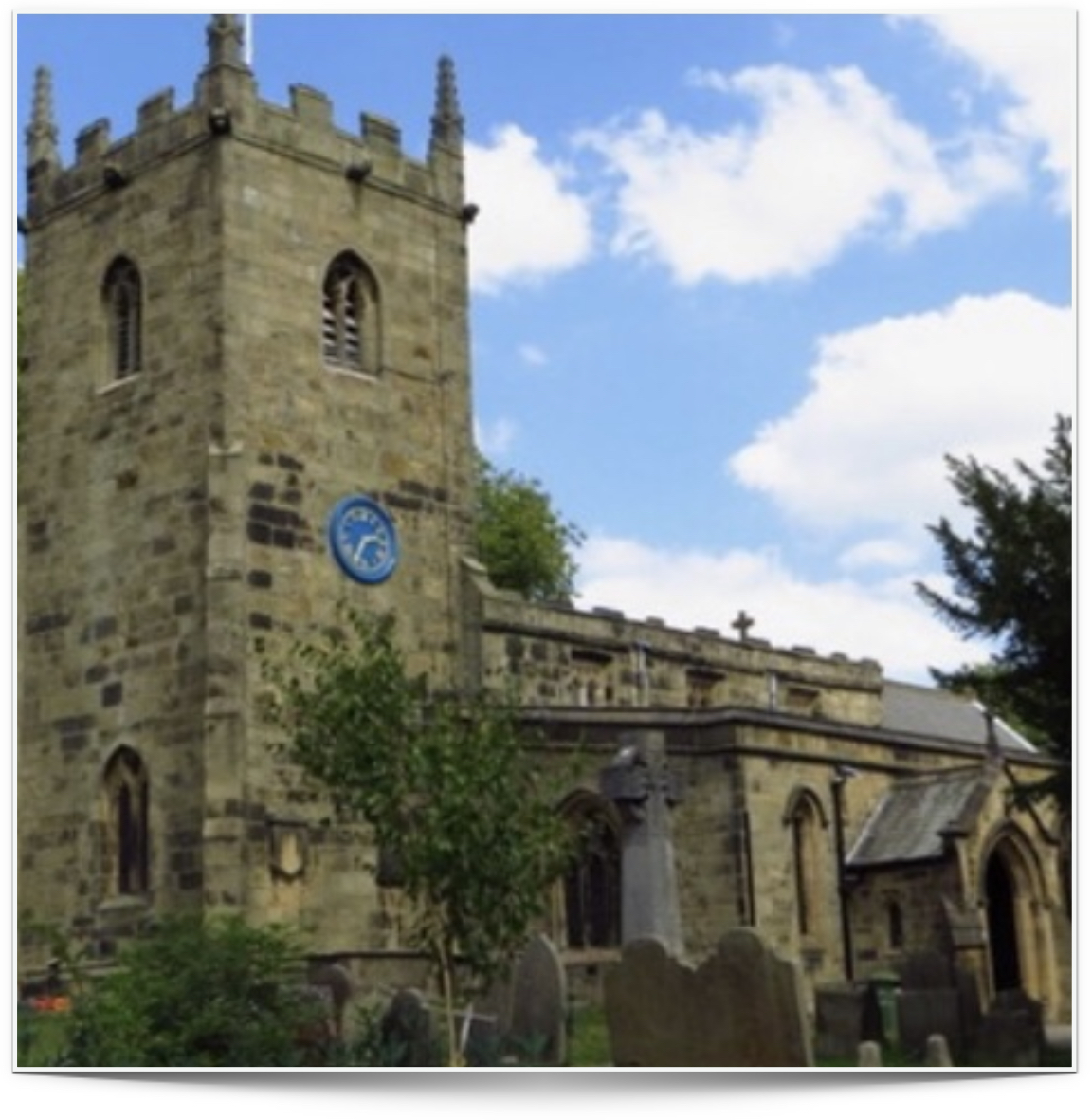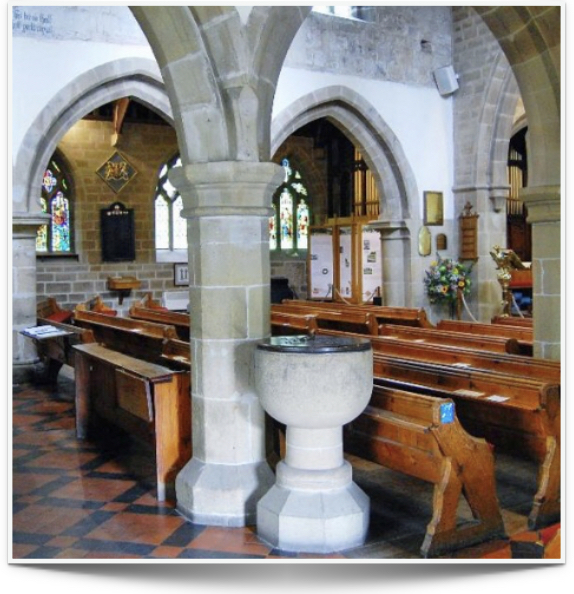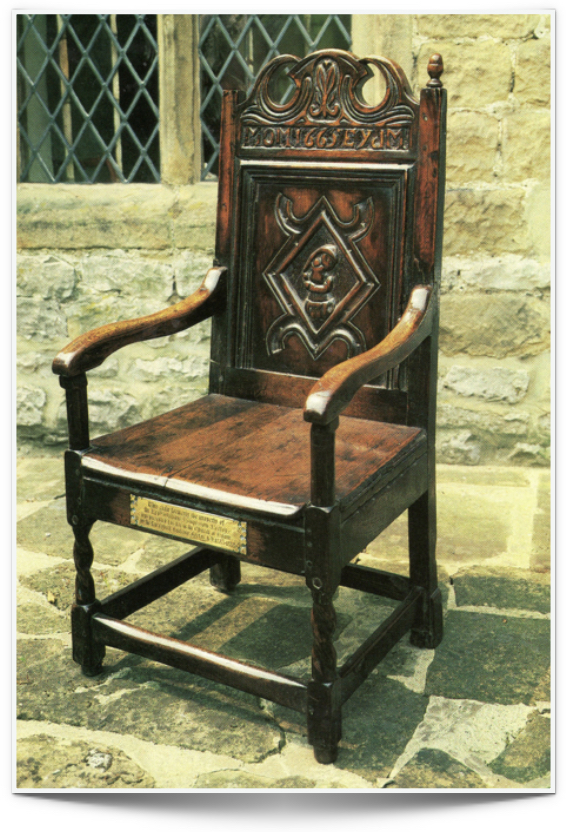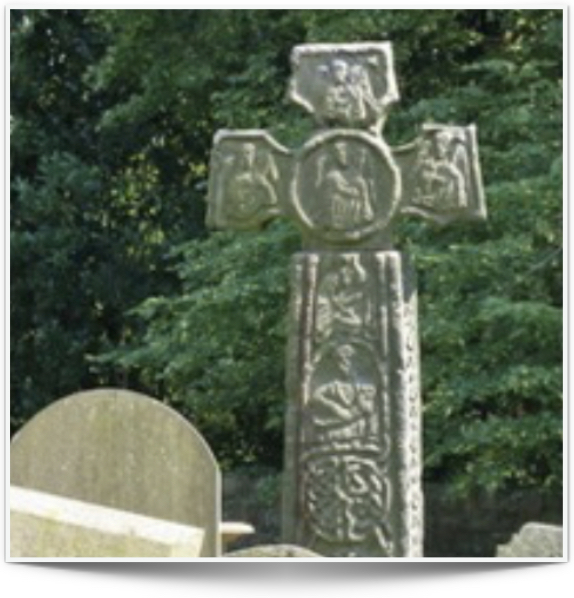 The Parish Church of St Lawrence is located in the village of Eyam in Derbyshire’s beautiful Peak District.
The Parish Church of St Lawrence is located in the village of Eyam in Derbyshire’s beautiful Peak District.
The historic village of Eyam dates back to Saxon times and was formerly a centre for lead mining. It is famous for the events during the Great Plague of 1666 when the villagers halted the spread of the disease by breaking off all contact with the outside world. A large proportion of the population died as a result and today there are many reminders of this great act of courage and selflessness.
Christian worship has taken place here over a thousand years. While the first recorded rector of the parish began his ministry in 1250, the buildings themselves date from Saxon times.
Various architectural details of today’s church buildings reflect the fact that Christians have worshipped God here over many centuries.
The north aisle has a font of Saxon origins, and Norman pillars which may well rest on Saxon foundations. It also has a Norman window at the west end.
 The nave of the church is of medieval design (about 1350), and in the eighteenth century contained three galleries which were removed during the nineteenth century restoration. There was also a medieval chancel, and north and south aisles - all smaller than they are today.
The nave of the church is of medieval design (about 1350), and in the eighteenth century contained three galleries which were removed during the nineteenth century restoration. There was also a medieval chancel, and north and south aisles - all smaller than they are today.
The tower was built in the seventeenth century, housing four of its six bells. The Victorians were great church builders and developers, and their work at St Lawrence included doubling the width of the north aisle to commemorate the bicentenary of the Eyam Plague in 1868. Work done over the next twenty years included a new porch, roof, vestries and clerestory windows (on the south side of the nave), and the renovation of the east end and south aisle.
Like the people who come here, the church buildings continue to develop and change. The twentieth century is represented by a window installed in 1985 depicting the plague.
 Once inside the church, the terrible effects of the plague at Eyam are quickly brought home to us by the Plague Register in the south aisle. This was copied from the parish register of the time and gives the names of all the people who died during the fourteen months of the plague in 1665 and 1666. In all, 260 people died out of a population of approximately 350.
Once inside the church, the terrible effects of the plague at Eyam are quickly brought home to us by the Plague Register in the south aisle. This was copied from the parish register of the time and gives the names of all the people who died during the fourteen months of the plague in 1665 and 1666. In all, 260 people died out of a population of approximately 350.
The window behind the bookstall is the work of the Victorian stained glass artist Christopher Webb. His ‘signature’, a spider’s web, can be seen in the bottom right hand corner.
The Jacobean pulpit that would have been used by William Mompesson once stood on the north side of the chancel and also incorporated a clerk’s seat. It was moved to its present position in 1868.
Next to the altar is a chair that used to belong to Mompesson. It is thought to have been made by a local carpenter. The Rev. Egbert Hacking, who was Rector of Eyam between 1884 and 1886, discovered it in a second-hand shop in Liverpool and brought it back to the church.
In the Churchyard
The oldest and most striking feature of the churchyard is the eighth-century Celtic cross. One of the best preserved examples in the country, it is decorated with a mixture of Christian and pagan symbols. It may have originally been a wayside preaching cross.
 Nearby is the table tomb of Catherine Mompesson. Her name on the top of the tomb has a spelling mistake which the seventeenth-century stonemason duly corrected.
Nearby is the table tomb of Catherine Mompesson. Her name on the top of the tomb has a spelling mistake which the seventeenth-century stonemason duly corrected.
On the south wall of the church is a remarkable sundial, built by William Shaw and dated 1775. On a sunny day it not only shows the time quite accurately in half hours, but it also indicates the time in places worldwide.
When you visit Eyam Church
• If you need help with the steps into Church we have ramps in the porch.
• The door can be stiff so please twist the door handle to the right and push.
• If you would like assistance please phone 01433 630930 during office hours on weekdays.